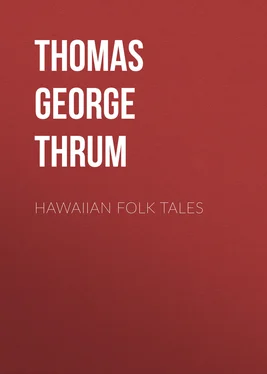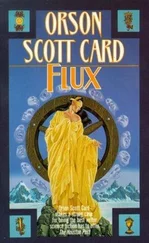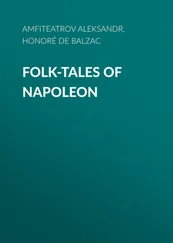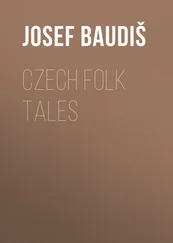Thomas George Thrum - Hawaiian Folk Tales
Здесь есть возможность читать онлайн «Thomas George Thrum - Hawaiian Folk Tales» — ознакомительный отрывок электронной книги совершенно бесплатно, а после прочтения отрывка купить полную версию. В некоторых случаях можно слушать аудио, скачать через торрент в формате fb2 и присутствует краткое содержание. Жанр: Старинная литература, foreign_antique, Сказка, на английском языке. Описание произведения, (предисловие) а так же отзывы посетителей доступны на портале библиотеки ЛибКат.
- Название:Hawaiian Folk Tales
- Автор:
- Жанр:
- Год:неизвестен
- ISBN:нет данных
- Рейтинг книги:4 / 5. Голосов: 1
-
Избранное:Добавить в избранное
- Отзывы:
-
Ваша оценка:
- 80
- 1
- 2
- 3
- 4
- 5
Hawaiian Folk Tales: краткое содержание, описание и аннотация
Предлагаем к чтению аннотацию, описание, краткое содержание или предисловие (зависит от того, что написал сам автор книги «Hawaiian Folk Tales»). Если вы не нашли необходимую информацию о книге — напишите в комментариях, мы постараемся отыскать её.
Hawaiian Folk Tales — читать онлайн ознакомительный отрывок
Ниже представлен текст книги, разбитый по страницам. Система сохранения места последней прочитанной страницы, позволяет с удобством читать онлайн бесплатно книгу «Hawaiian Folk Tales», без необходимости каждый раз заново искать на чём Вы остановились. Поставьте закладку, и сможете в любой момент перейти на страницу, на которой закончили чтение.
Интервал:
Закладка:
Every year, so it is told, the procession of ghosts called by the natives Oio, marches in solemn state down the Mahiki road, and at this point enters the Lua o Milu. A man, recently living in Waimea, of the best reputation for veracity, stated that about thirty or more years ago, he actually saw this ghostly company. He was walking up this road in the evening, when he saw at a distance the Oio appear, and knowing that should they encounter him his death would be inevitable, he discreetly hid himself behind a tree and, trembling with fear, gazed in silence at the dread spectacle. There was Kamehameha, the conqueror, with all his chiefs and warriors in military array, thousands of heroes who had won renown in the olden time. Though all were silent as the grave, they kept perfect step as they marched along, and passing through the woods down to Waipio, disappeared from his view.
In connection with the foregoing, Professor W. D. Alexander kindly contributes the following:
“The valley of Waipio is a place frequently celebrated in the songs and traditions of Hawaii, as having been the abode of Akea and Milu, the first kings of the island....
“Some said that the souls of the departed went to the Po (place of night), and were annihilated or eaten by the gods there. Others said that some went to the regions of Akea and Milu. Akea (Wakea), they said, was the first king of Hawaii. At the expiration of his reign, which terminated with his life at Waipio, where we then were, he descended to a region far below, called Kapapahanaumoku (the island bearing rock or stratum), and founded a kingdom there. Milu, who was his successor, and reigned in Hamakua, descended, when he died, to Akea and shared the government of the place with him. Their land is a place of darkness; their food lizards and butterflies. There are several streams of water, of which they drink, and some said that there were large kahilis and wide-spreading kou trees, beneath which they reclined.” 4 4 Ellis’s “Polynesian Researches,” pp. 365–7.
“They had some very indistinct notion of a future state of happiness and of misery. They said that, after death, the ghost went first to the region of Wakea, the name of their first reputed progenitor, and if it had observed the religious rites and ceremonies, was entertained and allowed to remain there. That was a place of houses, comforts, and pleasures. If the soul had failed to be religious, it found no one there to entertain it, and was forced to take a desperate leap into a place of misery below, called Milu.
“There were several precipices, from the verge of which the unhappy ghosts were supposed to take the leap into the region of woe; three in particular, one at the northern extremity of Hawaii, one at the western termination of Maui, and the third at the northern point of Oahu.” 5 5 Dibble’s History, p. 99.
Near the northwest point of Oahu is a rock called Leina Kauhane, where the souls of the dead descended into Hades. In New Zealand the same term, “Reinga” (the leaping place), is applied to the North Cape. The Marquesans have a similar belief in regard to the northermost island of their group, and apply the same term, “Reinga,” to their Avernus.
VI
Lonopuha; Or, Origin of the Art of Healing in Hawaii
During the time that Milu was residing at Waipio, Hawaii, the year of which is unknown, there came to these shores a number of people, with their wives, from that vague foreign land, Kahiki. But they were all of godly kind (ano akua nae), it is said, and drew attention as they journeyed from place to place. They arrived first at Niihau, and from there they travelled through all the islands. At Hawaii they landed at the south side, thence to Puna, Hilo, and settled at Kukuihaele, Hamakua, just above Waipio.
On every island they visited there appeared various diseases, and many deaths resulted, so that it was said this was their doings, among the chiefs and people. The diseases that followed in their train were chills, fevers, headache, pani, and so on.
These are the names of some of these people: Kaalaenuiahina, Kahuilaokalani, Kaneikaulanaula, besides others. They brought death, but one Kamakanuiahailono followed after them with healing powers. This was perhaps the origin of sickness and the art of healing with medicines in Hawaii.
As has been said, diseases settled on the different islands like an epidemic, and the practice of medicine ensued, for Kamakanuiahailono followed them in their journeyings. He arrived at Kau, stopping at Kiolakaa, on the west side of Waiohinu, where a great multitude of people were residing, and Lono was their chief. The stranger sat on a certain hill, where many of the people visited him, for the reason that he was a newcomer, a custom that is continued to this day. While there he noticed the redness of skin of a certain one of them, and remarked, “Oh, the redness of skin of that man!”
The people replied, “Oh, that is Lono, the chief of this land, and he is a farmer.”
He again spoke, asserting that his sickness was very great; for through the redness of the skin he knew him to be a sick man.
They again replied that he was a healthy man, “but you consider him very sick.” He then left the residents and set out on his journey.
Some of those who heard his remarks ran and told the chief the strange words, “that he was a very sick man.” On hearing this, Lono raised up his oo (digger) and said, “Here I am, without any sign of disease, and yet I am sick.” And as he brought down his oo with considerable force, it struck his foot and pierced it through, causing the blood to flow freely, so that he fell and fainted away. At this, one of the men seized a pig and ran after the stranger, who, hearing the pig squealing, looked behind him and saw the man running with it; and as he neared him he dropped it before him, and told him of Lono’s misfortune, Kamakanuiahailono then returned, gathering on the way the young popolo seeds and its tender leaves in his garment (kihei). When he arrived at the place where the wounded man was lying he asked for some salt, which he took and pounded together with the popolo and placed it with a cocoanut covering on the wound. From then till night the flowing of the blood ceased. After two or three weeks had elapsed he again took his departure.
While he was leisurely journeying, some one breathing heavily approached him in the rear, and, turning around, there was the chief, and he asked him: “What is it, Lono, and where are you going?”
Lono replied, “You healed me; therefore, as soon as you had departed I immediately consulted with my successors, and have resigned my offices to them, so that they will have control over all. As for myself, I followed after you, that you might teach me the art of healing.”
The kahuna lapaau (medical priest) then said, “Open your mouth.” When Lono opened his mouth, the kahuna spat into it, 6 6 An initiatory act, as in the priesthood.
by which he would become proficient in the calling he had chosen, and in which he eventually became, in fact, very skilful.
As they travelled, he instructed Lono (on account of the accident to his foot he was called Lonopuha) in the various diseases, and the different medicines for the proper treatment of each. They journeyed through Kau, Puna, and Hilo, thence onward to Hamakua as far as Kukuihaele. Prior to their arrival there, Kamakanuiahailono said to Lonopuha, “It is better that we reside apart, lest your healing practice do not succeed; but you settle elsewhere, so as to gain recognition from your own skill.”
For this reason, Lonopuha went on farther and located in Waimanu, and there practised the art of healing. On account of his labors here, he became famous as a skilful healer, which fame Kamakanuiahailono and others heard of at Kukuihaele; but he never revealed to Kaalaenuiahina ma (company) of his teaching of Lonopuha, through which he became celebrated. It so happened that Kaalaenuiahina ma were seeking an occasion to cause Milu’s death, and he was becoming sickly through their evil efforts.
Читать дальшеИнтервал:
Закладка:
Похожие книги на «Hawaiian Folk Tales»
Представляем Вашему вниманию похожие книги на «Hawaiian Folk Tales» списком для выбора. Мы отобрали схожую по названию и смыслу литературу в надежде предоставить читателям больше вариантов отыскать новые, интересные, ещё непрочитанные произведения.
Обсуждение, отзывы о книге «Hawaiian Folk Tales» и просто собственные мнения читателей. Оставьте ваши комментарии, напишите, что Вы думаете о произведении, его смысле или главных героях. Укажите что конкретно понравилось, а что нет, и почему Вы так считаете.












